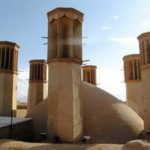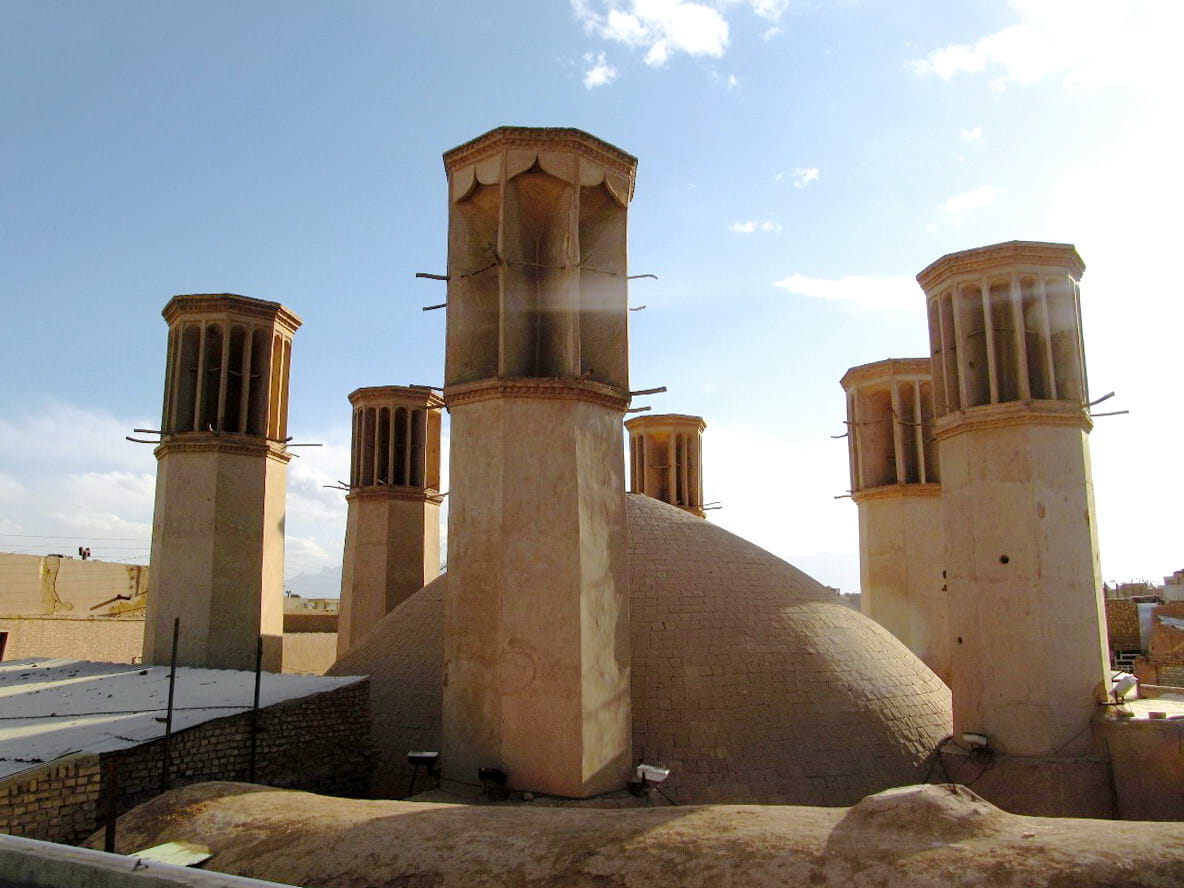Ab Anbar Curated by Shesh Badgir
The Ab Anbars are traditional Iranian water tanks.
The natural and climatic conditions and the width of the deserts of the Yazd region are the reason for the diffusion of various types of ab-anbar throughout the region. Today there are about 100 of these ab-anbar scattered in different parts of the region. The ab-anbar were usually built in the center of the city districts.
They comprise four main elements: khazine (the actual cistern), the dome, the pashir and the wind tower (badgir).
The khazine, in a cylindrical shape, was built inside the ground to convey the water coming from the qanat (underground channels) and to keep the water temperature low. The dome was built in hemispheric form above the khazine to protect the water from environmental pollution and keep it fresh. Pashir is a step-by-step tunnel for withdrawing water from khazine. The wind tower serves to direct the circulation of air inside the ab-anbar so that the water does not rot. The number of wind towers can vary from one to six, depending on the need. For example, the ab-anbar of Maryam Abad has only one badgir, while the ab-anbar "Shesh badgiri" has six, hence its name.
One of the main building materials of ab-anbar is the "dime" which is made of lime, ash and sand. This mortar, in addition to waterproofing the building, also serves to prevent the water from becoming putrid.
Most of the ab-anbar has only one access and one pashir, but some, in consideration of the urban context, have two or three accesses, for example the ab-anbar "Khaje" at the beginning of the Ramai branch and the ab-anbar "Shesh badgiri" have two entrances.
Some of the most important ab-anbar in the Yazd region are:
the ab-anbar "Seyed or Sahra", "Shesh badgiri", "Mas'udi", "Hajj Ali Akbari", "Khaje", "Golshan", "Rostam", "Giv", "Kolahduzha" and "Mirza Shafi '"To Yazd; the ab-anbar "Hasan Abad" in Meybod; the ab-anbar "Jadde Deh Bala" in Taft and the ab-anbar "Keshtkhan" in Rostaq.






